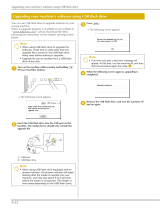
Table of Contents
ii
Picture ...................................................................................... 20
Play Mode ................................................................................ 21
Schedule ...........................................................................................21
Composite Out .................................................................................21
Network Streaming ..........................................................................22
Slide Show .......................................................................................22
Video Repeat ...................................................................................23
Memory Card (SD Card) ......................................................... 24
IR Control ................................................................................ 24
To lock the remote control ...............................................................25
To unlock the remote control ...........................................................25
Hidden Menu ........................................................................... 25
Upgrade .................................................................................... 27
Upgrading the System Driver ..........................................................27
Content Update Mode from USB Flash Drive ................................28
Auto Content Update .......................................................................29
System ...................................................................................... 29
Factory Reset ...................................................................................29
Change Password .............................................................................30
Touch Calibration ............................................................................30
How to Use the Digital Signage
Processor 31
Playing media files on the SD card .......................................... 31
Playing media files using a USB flash drive ........................... 31
Updating Content ..................................................................... 32
USB Flash Drive Update .................................................................33
Manual rewrite of SD card by PC ....................................................33
Rewrite through LAN ......................................................................34
Rewrite through WAN .....................................................................34
Specifications 35
Internal Storage ........................................................................ 35
SD card structure .............................................................................35
Configuration File .................................................................... 35
Wireless/3G Config Setting .............................................................36
Supported Image Formats ........................................................ 40
Supported Video and Audio Formats ...................................... 40




















